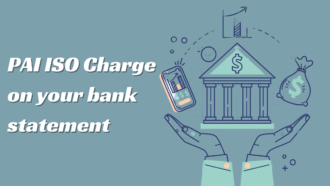Navigating Borrowing: Making Smart Borrowing Decisions
Most businesses take out loans at some point to fund their growth or to cover gaps in their cash flow. While borrowing can be advantageous, taking an irresponsible approach to lending can be catastrophic for your business’s finances. Understanding the different loan types and how to manage your debt can help you stay on the right track.
Understanding Credit Scores and Loan Types
If you’re considering taking out a loan for your business, you need to understand credit scores and the different loan types.
Your credit score will play a significant role in:
- Whether or not you’re approved for the loan
- The loan’s interest rate
The higher your credit score, the higher your chances of being approved and securing a more favorable interest rate. Lower interest rates mean lower monthly payments and overall loan costs.
Having a good credit score can also give you some flexibility in how much you borrow. Someone with excellent credit can likely take out a much bigger loan compared to someone with a fair or poor credit score.
There are free and paid services that will allow you to check your credit score.
If you have a great credit score, you have more options when it comes to loan types.
There are several types of loans for businesses, including:
Term Loans
Term loans are one of the most common types of loans for businesses. They provide a lump sum of cash, and you agree to repay the loan with interest over time.
Today, businesses can apply for this type of loan online. Many online lenders offer loans up to $1 million, and funding is often much faster than a conventional bank loan.
The main drawback is that you may be required to provide collateral or a personal guarantee on the loan.
Lines of Credit
A line of credit is similar to a credit card in many ways. You are given access to funds up to your credit limit, and you only pay interest on the money you’ve taken out.
One advantage of a line of credit is that you have continual access to the funds. If you take out $20,000 and pay it back, you will once again have access to that $20,000.
Lines of credit are usually unsecured, which means you won’t have to provide collateral. However, you will need to have excellent credit and strong revenue to be approved. There may also be additional fees, like draw or maintenance fees.
This type of loan is best for seasonal businesses, companies facing cash flow shortages or those that only have short-term financing needs.
Invoice Factoring
If your business invoices clients or customers, invoice factoring may be an option for you. Here’s how it works:
- You send an invoice to a customer, and the payment is due in 60 days.
- Because you need cash now, you sell that invoice to a factoring company.
- You get a certain percentage of the invoice upfront (typically 90%), and the factoring company takes on the responsibility of collecting payment.
- Once the invoice is paid, you receive the rest of the invoice minus a factoring fee.
Invoice factoring can be a convenient way to get the cash you need, but it’s a more costly borrowing option. You also give up control of invoice collection, which can affect your brand and reputation.
Microloan
A microloan is a loan for $50,000 or less. They’re typically offered by mission-based organizations and non-profits to:
- Startups
- Businesses in disadvantaged communities
- Newer businesses
These loans usually have low costs and may even come with other services, like training and counseling. However, it can be challenging to meet the eligibility requirements.
Tips for Managing Your Debt
Your risks of borrowing money are that you need to pay it back. Imagine having a $100,000 loan come due. You have no means to pay it and you’re too leveraged for a loan. In this scenario, managing debt can be very challenging.
The tips below can help you better manage your debt:
Monitor Cash Flow in Real-time
Managing your cash flow with a platform like Cash Flow Frog will help you minimize your risk of debt and secure better credit terms if you can. A prime example of this is if you find that your current free cash flow is low and you’re projecting a shortage for the next three months.
In this scenario, you can use monitoring to:
- Try securing favorable loans or credit as early as you can
- Reduce the risk of signing the first credit terms that you come across
- Make difficult decisions to lower your cash outflows
If you manage your cash flow, you can take greater control over your debt.
Work to Reduce Expenses
Lower expenses empower you to use cash to grow your company without taking on more debt in the process. You can and should review your finances to learn where:
- Money is coming in
- Money is going out
- Unnecessary expenses are being made
If you work through your expenses and lower them as best you can, it will make managing debt and repaying it much easier.
In Conclusion
Inherent risks of borrowing money always exist. Businesses must do all that they can to make smart decisions when borrowing to limit their risk exposure. The tips above are a great opportunity to begin managing your company’s financial health.



















